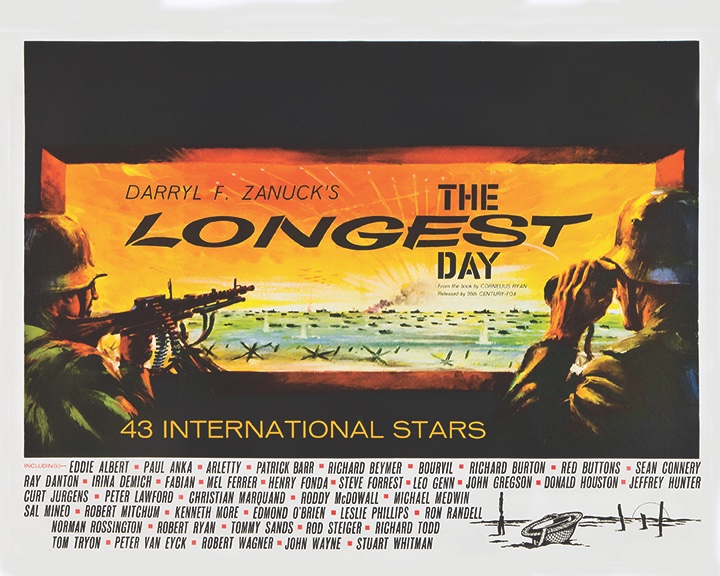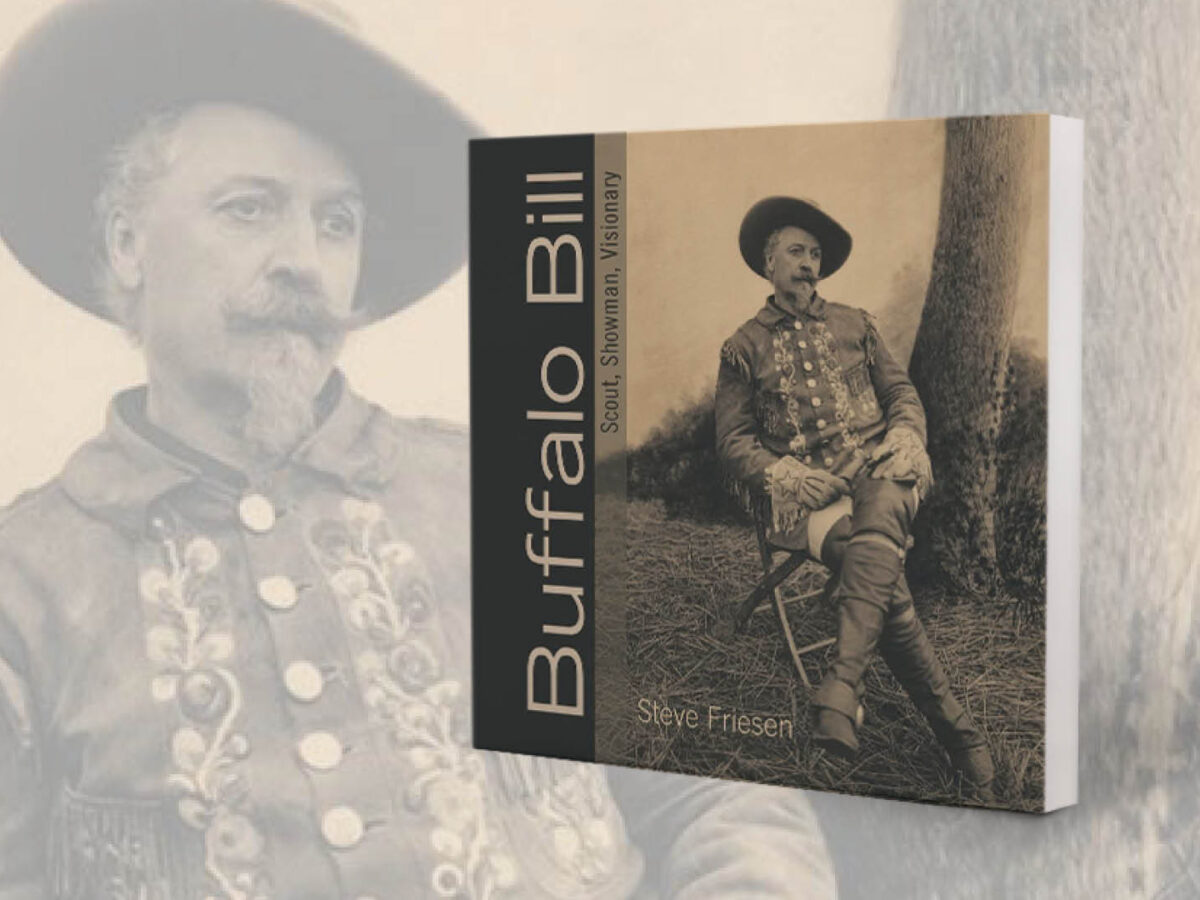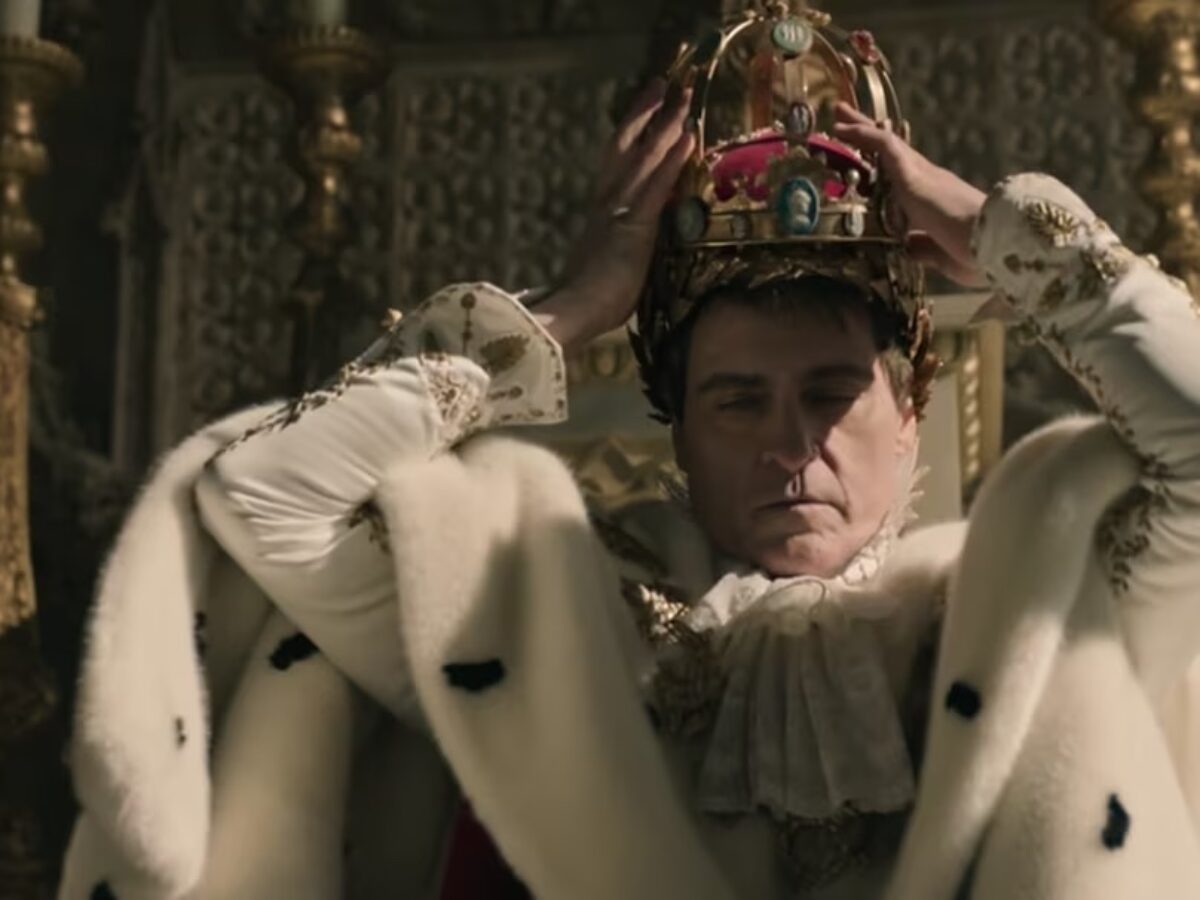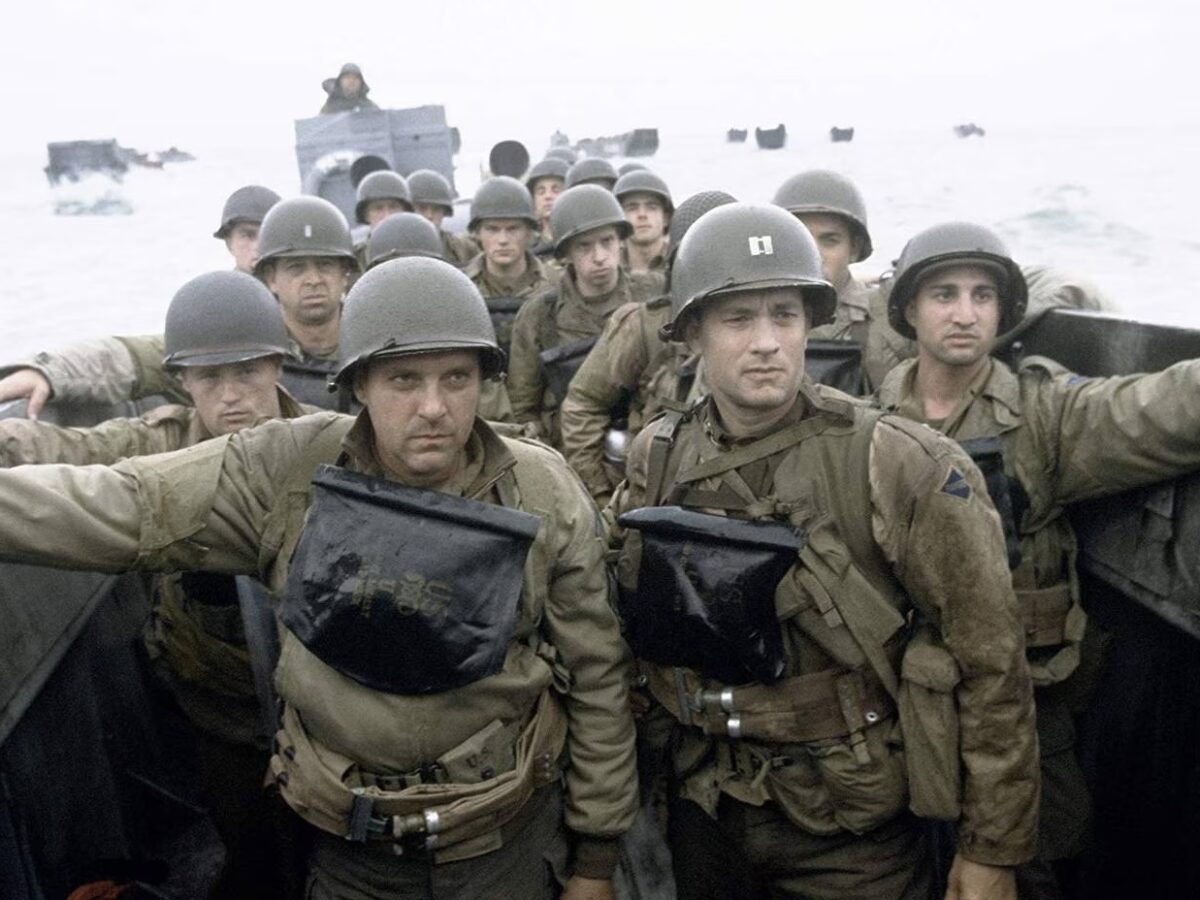More than 80 years after World War II began, there are few aspects of humanity’s most catastrophic war that have not been explored many times over by Hollywood. Yet World War II-themed films keep coming. But how often do these films get things right, accurately portraying either a particular event or capturing what it was really like for those who were there at the time? It is a valid question, both artistically and historically.
Listed below are 10 of the most accurate World War II movies based on three criteria: First, did the filmmakers get the basic storyline correct, accurately portraying the timeline of events and the characters involved? Second, did they capture the “feel” of the time, the conditions in which the military and civilian participants lived and fought, and the way they typically interacted with each other? Third, did the filmmakers get the “look” of things right, clothing their actors in accurate uniforms with the right patches and insignia, using the actual weapons and equipment, and employing the tactics used at that time? All three criteria play a part in creating a historically accurate movie.
Recommended for you
Such criteria present a significant and potentially expensive dilemma for moviemakers. Combat rarely occurs in a tight, straightforward sequence of events. Anyone who has fought in battle, large or small, can tell you that nothing is more chaotic, confusing, and unsettling than war. Accounts of the same event may vary widely from one veteran to another.
But above all, moviemaking is a business driven by the bottom line: making a profit. And in order to do that, filmmakers must tell their war stories concisely, within their budgets and time-constraints, and, as Hacksaw Ridge screenwriter Robert Schenkkan explained, “in the most compelling and exciting and emotionally gripping way” possible. Doing so can conflict with historical accuracy. As a notable example, Joseph E. Levine’s adaptation of Cornelius Ryan’s classic nonfiction book A Bridge Too Far, a movie that is generally praised for its accuracy, illustrates well the filmmaker’s dilemma. Consider that director Richard Attenborough needed to tell the entire Operation Market Garden story, portraying one of the most complex operations of the war in only about three hours of screen time. The Netherlands campaign lasted nine days and involved hundreds of thousands of participants, including British, Americans, Canadians, Poles, and Germans, plus Dutch civilians caught in the maelstrom. Ryan’s book on the campaign is 672 pages long, filled with facts based on countless interviews and meticulous research. William Goldman, who wrote the screenplay, faced the challenge of determining which of Ryan’s stories to include, which to ignore, and how to weave them into a coherent screen narrative. Attenborough, for his part, then had to take Goldman’s screenplay and bring it to life in a way that matched the epic scale of Operation Market Garden itself.
Given budgetary and time constraints, Goldman and Attenborough had little choice but to drastically compress the basic elements of the story. As a result, the seizing of a key highway bridge, which took several British military units nearly four hours of brutal fighting to accomplish, takes up just eight minutes of screen time. And there was not just one bridge seized that day, but two. Such compromises have been commonplace in World War II movies, as in other movies based on events occurring in other historical eras. To put the issue into military terms, the ultimate objective for filmmakers is to make a profit. And while a secondary objective might be to tell the story as accurately as possible, directors and screenwriters still have producers and financiers to answer to, and a public to please.
Below is one movie fan’s admittedly subjective list of the 10 arguably most accurate World War II movies, presented in the order of their release, knowing full well that there will be many movie fans who will bemoan the omission of one or more of their favorites.
‘THe Dam Busters’ (1955)
This movie about the Royal Air Force’s mission to destroy a series of Ruhr River dams by rotating cylindrical bombs like so many stones across a lake is not well-known today, despite being Great Britain’s most popular film of 1955. The movie deserves to be on the list despite the limitations imposed on filmmakers by Great Britain’s Official Secrets Act and the regrettable state of special effects in 1955. The Dam Busters hews close to the facts, and also excels in conveying the tension experienced by the Lancaster aircrews as they flew perilously low through a hail of bullets to deliver the bombs—and by those waiting back home in England to hear the results. Star Wars buffs can thank the “dam busters” for inspiring the rebels’ attack on the Death Star in the original 1977 Star Wars film. Not a bad legacy for the movie, and especially for the intrepid pilots and crewmen who, in fact, “busted” two of the Ruhr dams and damaged a third in May 1943.
‘The Longest Day’ (1962)
This blockbuster movie, directed by a trio of American, English, and German directors, is a commendable rendition of Cornelius Ryan’s 1959 eponymous classic book. The main emphasis of the movie is the D-Day story itself and not any particular participant, virtually all played by major movie stars (John Wayne, Henry Fonda, Sean Connery, Robert Mitchum, and Richard Burton, among many others). The producers saved some money by filming in black and white but otherwise did not skimp on depicting the events as accurately as possible, given the technology of the day. Even so, the landing on Omaha Beach suffers in comparison to Steven Spielberg’s wrenching version in the 1998 movie Saving Private Ryan, lacking both its accuracy and intensity. Nonetheless, The Longest Day remains the classic film of the war’s single most important day. The film won two Academy Awards, one for best black-and-white cinematography and another for special effects.
‘Tora! Tora! Tora!’ (1970)
In terms of historical accuracy, this film got it right, although critics such as the late Roger Ebert panned it at the time for being dull due in part to poor character development. But that was the point. It was not meant to be about any specific personalities, but about the event itself. Having two Japanese directors shoot their part of the story, while Richard Fleischer directed the American sequences, added to the film’s accuracy and is one reason it holds up so well. It is worth watching the Japanese scenes that were cut from the general release and are now available on a recent DVD release. The film was nominated for five Academy Awards and won one for special effects. The movie could be advantageously watched in tandem with 2001 film Pearl Harbor, which focuses on the American side of the December 7, 1941, attack.
‘Patton’ (1970)
This landmark movie, directed by Franklin J. Schaffner, was released in the midst of America’s most controversial war. And remarkably, both Vietnam War-era hawks and antiwar doves found things to like about the film, with nearly everyone praising George C. Scott’s masterful embodiment of George S. Patton in all of his complexity. Francis Ford Coppola, later an accomplished director himself, wrote the screenplay years before it was filmed, knitting together revealing anecdotes about the man taken from several firsthand accounts. Coppola created the film’s now-famous opening scene, where a bemedaled Patton addresses his troops while standing in front of an enormous American flag, by weaving together quotes from several of Patton’s actual speeches in a way that conveys the fundamental essence of the man. Patton won seven Academy Awards, including best picture, best director, best actor, and best screenplay.
‘Das Boot’ (1981)
This German classic on submarine warfare opens with a sobering statistic: “40,000 served on U-Boats—30,000 never returned.” Then we watch a drunken bacchanal as German submariners celebrate in a French tavern, the scene laden with the knowledge that we are (figuratively) watching dead men walking—or stumbling. Where the film excels is in the sense one gets of actually being in the cramped bowels of a World War II German submarine with its crew. Viewers experience the grime, the bawdy camaraderie, the claustrophobia, the churning seas, the tactics of the hunt, and the unrelenting terror of being hunted in turn. There is the constant dread of pinging enemy sonar and the roar of explosions during depth charge attacks, and foreboding doom while trapped on the ocean floor. The film provides a visceral experience, leaving viewers with the undeniable realization that this was what life was truly like for the crewmen on a German U-boat.
‘Band of Brothers’ (2001)
The same creative team that produced Saving Private Ryan—director Steven Spielberg, actor Tom Hanks, and others—also breathed life into author Stephen Ambrose’s splendid 1992 book on the American paratroopers of Easy Company, 506th Parachute Infantry Regiment of the 101st Airborne Division. The result is a superb 10-part TV miniseries that follows the men of Easy Company from their time in a stateside training camp to the ultimate surrender of Wehrmacht units near Adolf Hitler’s Berchtesgaden Alpine retreat. Few films portray the experiences and emotions of the average G.I. better than this masterpiece in its totality. One can safely conclude that Band of Brothers depicts what it was actually like for the soldiers in Easy Company. Filmed interviews with some of the actual members of the company contribute an extra layer of humanity to the viewing experience.
‘Downfall’ (2004)
In a riveting portrayal of the end of Adolf Hitler and his Nazi regime, Downfall recounts the Führer’s deranged last few days while trapped inside his bunker in Berlin. Based in part on the memoirs of Traudl Junge, one of Hitler’s secretaries and bunker mates, the movie is engrossing despite the demonic figure at its heart. The creators of Downfall strove to humanize history’s most demented and infamous mass murderer, and in doing so left viewers to work out for themselves how Hitler and all he embodied had come to pass. Swiss actor Bruno Ganz was justly heralded for his complex portrayal of Hitler, and the film itself was nominated for an Academy Award for best foreign film of 2004. The movie remains controversial, within and outside Germany, for its nuanced depiction of Hitler as anything more than a monster.
‘Letters From Iwo Jima’ (2006)
Clint Eastwood’s film presenting the Iwo Jima campaign is often difficult to watch, in the same way that Saving Private Ryan and Das Boot are difficult to watch. Like those movies, it viscerally conveys the horrors of combat, yet does so from the Japanese perspective. Considering that all the Japanese characters depicted in the film died during the battle, and that those in the film who survived are fictional characters, it is not totally accurate in the literal sense, but it excels in accurately capturing the horrors of combat for the typical Japanese soldier. To Eastwood’s directorial credit, he plausibly presents General Tadamichi Kuribayashi (portrayed by Ken Watanabe), Baron Takeishi Nishi, and other Japanese leaders, capturing their character and spirit as professional soldiers serving a doomed cause. Letters from Iwo Jima, filmed back-to-back with his companion piece movie, Flags of Our Fathers (also released in 2006)—depicting the battle from the American side—excels in conveying the true nature of combat in the Pacific Theater in all its brutality and barbarity. Letters from Iwo Jima won an Academy Award for best sound editing.
‘Unbroken’ (2014)
When actress-director Angelina Jolie brought Laura Hillenbrand’s bestseller about American airman and POW Louis Zamperini to the screen, she crafted a truly inspirational film that tracks admirably close to her subject’s story. Zamperini was a troubled youth growing up in Torrance, California, before discovering he possessed phenomenal speed and an indomitable spirit, leading him to compete as a middle-distance runner in the 1936 Olympic Games in Berlin. Those traits served him well during the 47 days he survived on a raft in the Pacific Ocean, followed by years of captivity, torture, and starvation suffered at the hands of his sadistic Japanese captors. The most powerful message of Zamperini’s life—his discovery of the redemptive power of forgiveness—is saved for the final credits. Only by watching the DVD’s special features does one get the full measure of this amazing man.
‘Dunkirk’ (2017)
Christopher Nolan and the creators of Dunkirk went to extraordinary lengths to accurately portray the events of the Dunkirk evacuation, told from the perspective of the encircled British Tommies, a handful of pilots, and the hundreds of intrepid British civilians who helped evacuate more than 338,000 British and French soldiers from France. Dunkirk was a devastating defeat that was in some ways also a victory, for it led to the resurrection of the British Army and the creation of a Free French force. While most of the characters in the film are fictional, they are composites of real-life individuals which helps the movie accurately convey the confusion, desperation, and bravery of those involved. For another Dunkirk point of view, Darkest Hour (2017), depicting Prime Minister Winston Churchill’s (Best Actor Oscar-winner Gary Oldman) role in the evacuation, proves that history does sometimes turn on the decisions of one great man. Dunkirk won Academy Awards for best film editing, best sound editing, and best sound mixing.
Another dozen movies worthy of honorable mention include: The Story of G.I. Joe (1945); Battleground (1949); To Hell and Back (1955); The Bridge on the River Kwai (1957); The Great Escape (1963); PT-109 (1963); Midway (1976); Schindler’s List (1993); Saving Private Ryan (1998); Conspiracy (2001); and The Great Raid (2005).
Mark DePue is the former director of oral history at the Abraham Lincoln Presidential Library and Museum in Springfield, Illinois.

this article first appeared in military history quarterly
Facebook: @MHQmag | Twitter: @MHQMagazine








